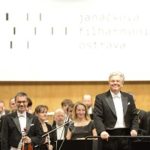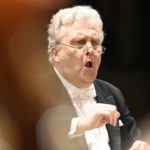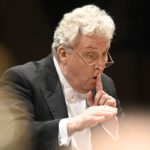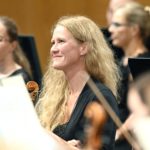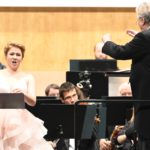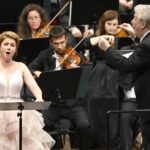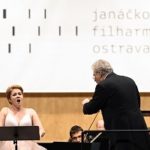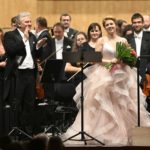V. Sinaisky took over the position of chief conductor very energetically
(review is taken from the portal Operaplus.cz, author Karla Hofmannová, October 4, 2020)
The Janáček Philharmonic Orchestra has a new chief conductor, Vassily Sinaisky, who belongs to the best Russian conductors and who has previously worked for the BBC Philharmonic Orchestra, the Latvian National Symphony Orchestra, the Malmö Symphony Orchestra, the Moscow Philharmonic Orchestra and, last but not least, he also worked as the chief conductor and music director in the Bolshoi Theatre in Moscow. He introduced himself as the chief conductor of the Janáček Philharmonic Orchestra in Ostrava on Thursday, October 1, 2020.
For his inaugural concert, Sinaisky chose a repertoire that showed that his domain is not only Russian music, but also works by some big classical European artists. Thus, the evening belonged to Richard Strauss, and to the magician of Russian music, Igor Stravinsky. Both are very close to music which describes the predatory nature of the human heart and turns to animal instincts.
Richard Strauss’ Dance of the Seven Veils from the opera Salome evokes the wild and low instincts with which the princess wants to get a hold of the head of John the Baptist from her stepfather. The conductor set a predatory tempo from the very beginning and gave the slow parts a tension that graduated with an accelerando to an effective end. The other songs that followed were also by Strauss. His Four Last Songs – Frühling (Spring), September, Beim Schlafengehen (When Falling Asleep), and I´m Abendrod (At Sunset) – were performed by the queen of singing, Kateřina Kněžíková. Her voice had a beautiful depth. She led the singing cantilena in a trembling tension from the very first, deep tones, which surprisingly fit her very well, and her tones were soft, round, and glowing. She performed with a soulful expression and dreaminess, which gradually led to enlightenment. It was a rare and unique performance.
After the break, Igor Stravinsky’s The Rite of Spring was performed. It is a very iconic work by a Russian composer who was famous for his music for Sergei Diaghilev’s ballets. In Pictures of Pagan Russia, he introduced animalism that outraged the audience. Today, we appreciate his instinctive aggression he puts in his work, expressed mainly by sharp and quickly alternating rhythms, irregular accents, but also by unusual harmonic atonal progressions. The meter and dynamic percussion are accelerating towards the end, which leads to the final ecstasy.
Vassily Sinaisky conducted the orchestra with precise and efficient gestures, ascetically, unaffected, and with a strict discipline. He chose sharp tempos, and he gave the instrumentation a color, so the orchestra was much more dynamic and plastic than we are used to, and the players put their maximum concentration and tension into the concert. It was an impressive, yet very disciplined and tight performance. It seems that with the new chief conductor, a new era of the orchestra has begun. This gives the orchestra hopes to grow into an exclusive musical ensemble.
